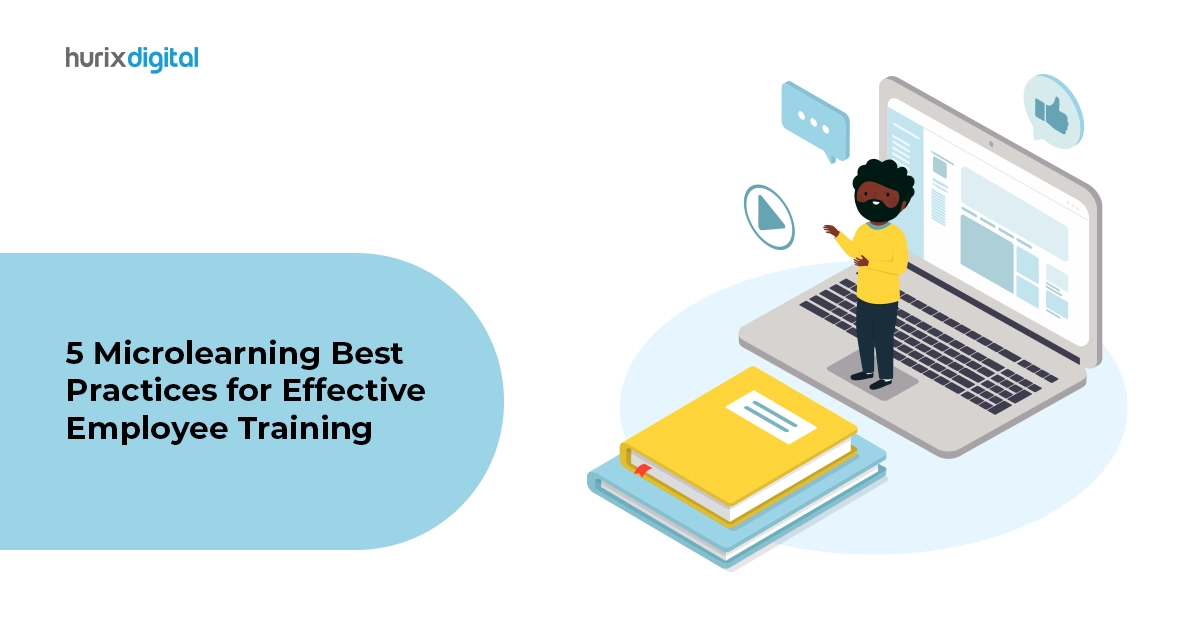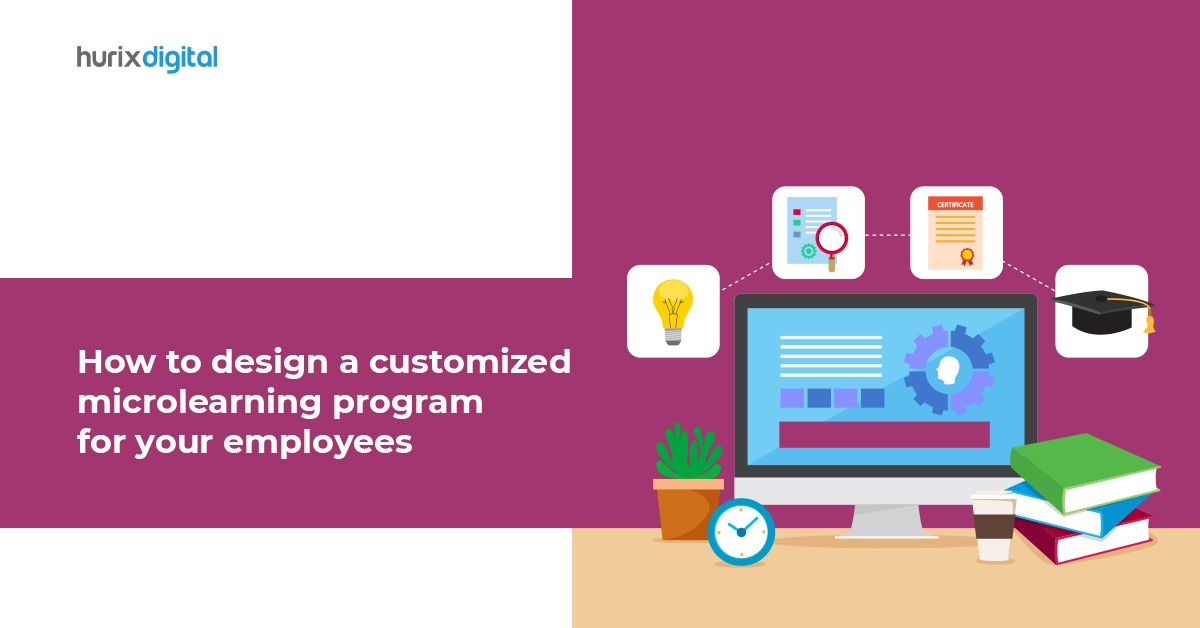
5 Microlearning Best Practices for Effective Employee Training!
Summary
This guide provides a detailed overview of microlearning training. It includes a brief introduction to the microlearning format and its various methods. It also covers the benefits of microlearning training and the various features that microlearning platforms offer.
Effective employee training is one of the major aspects that differentiates an average organization from a highly competitive market leader in the modern economy. Companies often adopt various forms and methods of training, development, and learning programs for employees to boost their productivity and keep them motivated.
Microlearning technology as a training methodology was gaining rapid acceptance even before the pandemic, and now it is growing at an exponential rate in the post-pandemic era. According to a study, the global microlearning market is poised to reach $6.3 billion by 2032 from $2.1 billion in 2022.
This shows that the increasing need for effectively training a large number of employees is driving organizations to turn to microlearning training.
Table of Contents:
- What is Microlearning?
- What are the Five Popular Microlearning Methods?
- What are the Five Microlearning Best Practices for Ensuring Effective Employee Training?
- What are the Benefits of Microlearning?
- In Closing Thoughts
What is Microlearning?
Microlearning is an online training format in which the content is broken down into small bite-size segments. Most people find it overwhelming to digest large amounts of information in just one training session. Thus, in microlearning, the content is provided in small bursts of information, making it easier for the learner to assimilate the new content.
Engaging and effective microlearning courses are composed of text, video, interactive multimedia, eBooks, and other formats. Microlearning platforms often deliver training solutions to employees, customers, and students via microlearning video examples.
Microlearning training is generally used in corporate settings as it helps employees learn quickly and effectively.
What are the Five Popular Microlearning Methods?
Microlearning examples include microcopy, microlearning videos, infographics, etc. Many microlearning techniques can be used to deliver training to employees. Some of these methods include:
1. Microcopy
Microcopies are short, highly contextual, targeted messages that help users learn. Error messages, eCommerce hints, and contact form explainers are examples of microcopies.
2. Microlearning Videos
These are short, focused videos created to meet a specific training need. Microlearning videos can be standalone videos that offer learning about specific topics or part of a longer series of videos.
Explainer videos, micro-lectures, interactive videos, kinetic text-based animations, and whiteboard animations are examples of microlearning videos.
3. Microlearning Apps or Mobile Apps
Microlearning apps include apps like Google, YouTube, Headspace, TED, etc., that can provide micro-lessons on the go.
4. Micro-Challenges
Micro-challenges are often in the form of games, multiple-question quizzes, polls, flashcards, and simulations and can include badges, scores, awards, or other incentives for taking part.
5. Infographics
Infographics and icons are graphic representations of data and information that focus on key points and numerical values.
These could be in the form of statistical infographics, timeline infographics, hierarchical infographics, list infographics, and informational infographics.
What are the Five Microlearning Best Practices for Ensuring Effective Employee Training?
Microlearning is an effective and engaging way of delivering training modules and content to the target audience.
Here are five best practices that will help you in structuring an orderly online training program:
1. One Learning Objective Per Module
The very objective of microlearning is to deliver training in mini doses to the learners, so the focus must be on one learning objective per module.
Choose the content carefully so it addresses specific issues and equips the learner with the information necessary to tackle them. Including short quizzes at the end will help cement their learnings.
2. Bite-size Modules
While designing training programs, one might be tempted to cram in as much information as possible. However, this might prove to be counterintuitive when it comes to microlearning.
It is recommended that the information be divided into bite-size segments. Textual content shouldn’t exceed a 5-minute read, and videos should ideally be around 10 minutes each.
Include only the content that adds value and leave out any unnecessary information.
3. Mobile Access
Microlearning training content is often accessed by employees on the go. So, it is essential that the training be mobile-ready and can be accessed on several electronic devices like smartphones, iPads, tablets, etc.
The learners should be able to access the online courses and resources whenever they want from whatever devices they are using.
4. Multi-format Content
There are many methods of delivering microlearning training, including text, video, audio, and infographics. Ideally, it is a good idea to include a multimedia format and use a variety of visuals, explainer videos, podcasts, and animations to make the training program more engaging.
Using a combination of media not only enhances your online training but also caters to people with different learning styles.
5. Customization
Microlearning courses have to cater to the needs of diverse audiences. Therefore, there is no one-size-fits-all solution when it comes to designing online learning programs.
An effective microlearning training module should be able to support the individual learning needs of your employees. Customization in eLearning can be achieved with branching, a process that allows you to build differentiated learning modules.
What are the Benefits of Microlearning?
Microlearning offers numerous benefits to a modern organization and its employees. Some of the benefits are:
- Microlearning enables building a culture of continuous learning.
- It leads to improved learning retention by allowing the learners to absorb the content in mini segments.
- It boosts the pace of learning and leads to more learner satisfaction.
- Microlearning training modules are typically more engaging than traditional training programs.
- When implemented effectively, it can save time spent on training programs and reduce training costs.
- The short structure of microlearning ensures better learner efficiency.
- It enables employees to expand their skill sets and close skill gaps.
- Microlearning can be customized to provide personalized learning experiences to different employees.
- It allows the employees to learn at their own pace and on their schedule due to its flexibility.
- Microlearning helps employees stay up-to-date with the latest technological and business trends.
In Closing Thoughts
Microlearning training is one of the best ways to impart meaningful and effective training to employees in any organization.
By dividing the content into bite-sized segments, microlearning modules ensure that the learners get precise content that can be easily assimilated. Select a micro-learning platform that provides customization options to get the best out of your training programs.
Hurix Digital has been an industry leader in the corporate training field for over 20 years and is committed to creating microlearning experiences with best practices for institutes across industries. Contact our experts today to discuss your training needs, and let us get started on your microlearning training project!

A highly enthusiastic and motivated sales professional with over twenty five years of experience in solution selling of training-related applications and services. Maintains an assertive and dynamic style that generates results. Ability to establish long-term relationships with clients built on trust, quality of service and strategic vision. Specializes in financial services, higher ed, publishing and government in the areas of learning and development.











